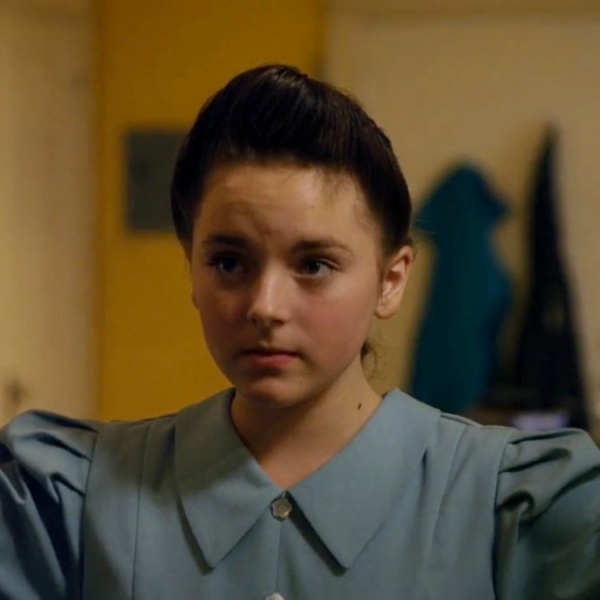
Greetings, fellow TV enthusiasts! I’m Emma, your friendly neighborhood movie buff, and today we’re taking a cozy trip down memory lane to explore the fascinating world of iconic TV families. These fictional clans have not only entertained us but also served as reflections of American culture, values, and societal shifts. So, dust off that remote control, settle into your favorite armchair, and let’s dive into the heartwarming, quirky, and sometimes dysfunctional households that have graced our screens over the years.
The Cleavers: “Leave It to Beaver” (1957-1963)
Let’s begin with the quintessential 1950s American family—the Cleavers from “Leave It to Beaver.” This idyllic suburban family, led by Ward and June Cleaver, portrayed the post-World War II vision of domestic bliss. The show reflected the era’s emphasis on conformity, gender roles, and the suburban dream.
Key Characteristics:
- Ward Cleaver as the wise, authoritative father figure.
- June Cleaver as the nurturing, stay-at-home mother who epitomized the perfect homemaker.
- Wally and Beaver as the wholesome, mischievous but ultimately well-behaved sons.
Cultural Significance: “Leave It to Beaver” captured the innocence and simplicity of the 1950s, offering viewers a glimpse into an idealized American family during a time of social change and the baby boom.
The Bunkers: “All in the Family” (1971-1979)
Fast forward to the 1970s, and we meet the Bunkers—a working-class family living in Queens, New York, in “All in the Family.” Led by the gruff but lovable Archie Bunker, this family tackled issues of racism, sexism, and generational divides head-on.
Key Characteristics:
- Archie Bunker as the cantankerous, conservative patriarch.
- Edith Bunker as the sweet but naive wife.
- Michael “Meathead” Stivic, their liberal son-in-law, who clashed with Archie on social issues.
- Gloria Bunker Stivic, their daughter, caught in the middle of her husband and father’s ideological battles.
Cultural Significance: “All in the Family” challenged societal norms by addressing taboo topics and sparking conversations about prejudice and social change. It became a groundbreaking show that reflected the turbulent times of the 1970s.
The Huxtables: “The Cosby Show” (1984-1992)
In the 1980s, the Huxtables from “The Cosby Show” presented a different image of the American family. This affluent African American family, led by Dr. Heathcliff Huxtable and his lawyer wife Clair, shattered stereotypes and showed that successful, loving families come in all colors.
Key Characteristics:
- Dr. Heathcliff Huxtable, an obstetrician, and Clair Huxtable, an attorney, as accomplished professionals and loving parents.
- Five children, each with their unique personalities and aspirations.
Cultural Significance: “The Cosby Show” broke barriers by depicting a successful African American family and highlighting the importance of education, strong family bonds, and humor. It played a pivotal role in reshaping perceptions of African American families on TV.
The Simpsons: “The Simpsons” (1989-present)
Ah, the Simpsons—America’s favorite animated family from the fictional town of Springfield. Comprising Homer, Marge, Bart, Lisa, and Maggie, this irreverent and satirical family has been entertaining viewers for decades.
Key Characteristics:
- Homer Simpson, the bumbling but lovable father with a penchant for donuts.
- Marge Simpson, the patient and nurturing mother with her iconic blue beehive.
- Bart Simpson, the mischievous troublemaker.
- Lisa Simpson, the intelligent and socially conscious daughter.
- Maggie Simpson, the pacifier-sucking baby with hidden depths.
Cultural Significance: “The Simpsons” satirizes American culture, politics, and everyday life. The show’s longevity and ability to remain relevant over the years reflect its keen observations and commentary on American society.
The Pritchetts and Dunphys: “Modern Family” (2009-2020)
“Modern Family” brought a fresh take on the American family in the 21st century. This mockumentary-style show showcased an extended family, including a diverse range of characters and relationships.
Key Characteristics:
- Jay Pritchett as the patriarch of the family.
- His second wife, Gloria, a vivacious Colombian.
- Jay’s adult daughter, Claire, and her family.
- Jay’s adult son, Mitchell, and his partner, Cameron, who adopt a daughter.
Cultural Significance: “Modern Family” celebrated diversity, love, and the evolving definition of family in contemporary America. It portrayed various family dynamics, including a same-sex couple raising a child, with humor and heart.
The Johnsons: “Black-ish” (2014-present)
“Black-ish” follows the Johnson family, led by Andre “Dre” Johnson and Rainbow “Bow” Johnson, as they navigate issues of race, identity, and culture while living an upper-middle-class lifestyle.
Key Characteristics:
- Dre Johnson as a successful advertising executive and loving father.
- Bow Johnson as an anesthesiologist and the voice of reason in the family.
- Their four children, each grappling with their own challenges related to their cultural identity.
Cultural Significance: “Black-ish” provides a platform for discussions about race, representation, and the complexities of African American identity. It tackles serious issues with humor and empathy, offering insights into the modern African American experience.
The Future of TV Families
As we move forward, TV continues to evolve, and our TV families evolve with it. Shows like “This Is Us” (2016-present) explore the intricacies of contemporary families, while others, like “Schitt’s Creek” (2015-2020), redefine the meaning of family itself.
In the ever-shifting landscape of American culture, these iconic TV families have provided viewers with laughter, tears, and profound insights into the complexities of family life. They’ve mirrored societal changes, challenged norms, and, above all, reminded us that the bonds of family, in all their diverse forms, are a cornerstone of American culture.
So, whether you’re a Cleaver, a Simpson, a Pritch


